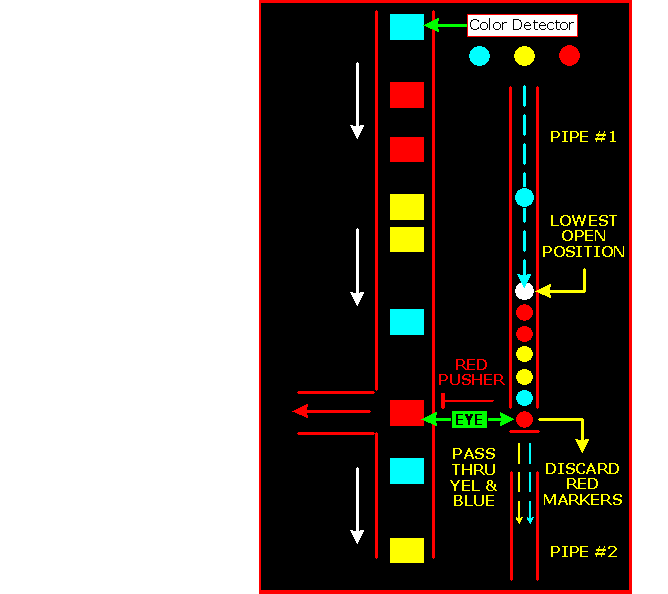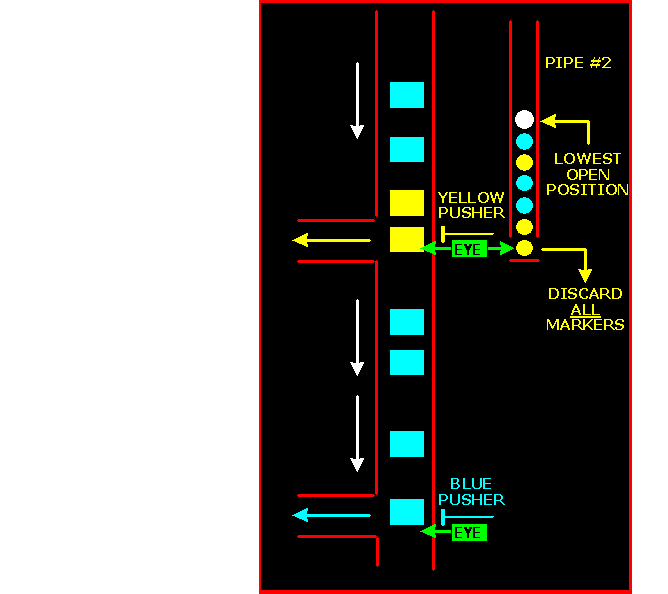Re: Conveyor
Thanks John, I thimk I'm seing the picture, Iam practicing with this program, have a test plc at home, I shall inter some logic, and force inputs and follow the data monitors to see how they load in. Such a simple operation but yet so difficult to program.
Darren
I'll let you know.
JohnW said:Darren, another way is to use an indexed file to load the coloured boxes, so your colour eye loads the conveyor with integers for each colour. and counts as it does so
1=Red
2=Blue
4 =yellow
etc, as peviously stated.
Each push off station will count from the top of the indexed file so when it sees a box it compares the integer using indexed addressing and if it corresponds to the right colour it pushes the box off .
i.e index file is N7:100, length 16
The indexed address is N7:[100+C5:1.ACC]
each push off point starts counting when it sees the first box and the counter .ACC value is used as the index for a compare instruction if the colours match it pushes that one off and continues counting. Reset the counter at 16 (or whatever length the indexed file is). the File has to be long enough to count all the boxes before the last push off point without repeating.
The yellow push off will look at N7:[100+C5:2.ACC]
etc.
It doesn't matter how many boxes are between each station as long as they stay in order.
This is just off the top of my head as I eat my lunch so it may not work.
Thanks John, I thimk I'm seing the picture, Iam practicing with this program, have a test plc at home, I shall inter some logic, and force inputs and follow the data monitors to see how they load in. Such a simple operation but yet so difficult to program.
Darren
I'll let you know.
Last edited:





